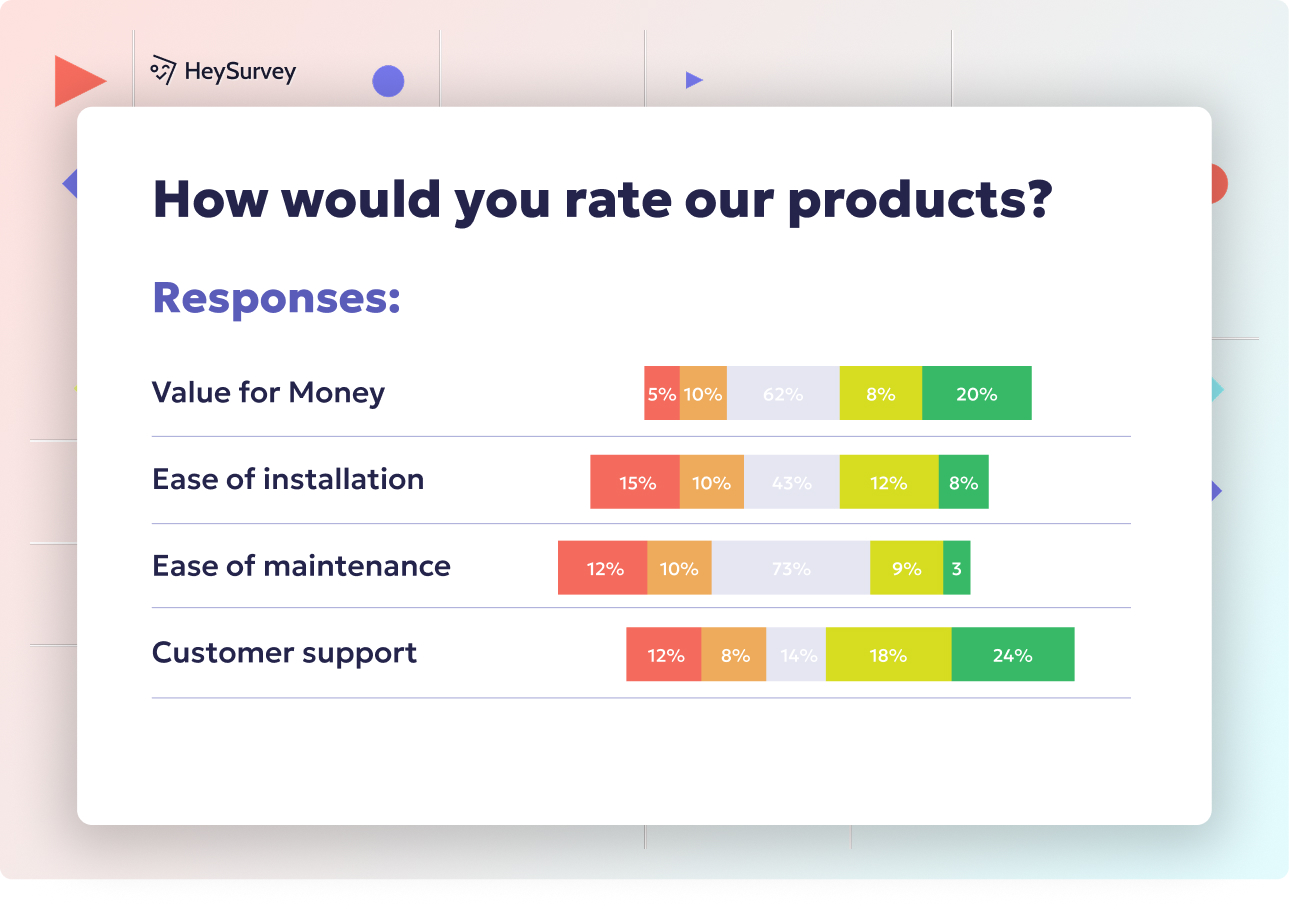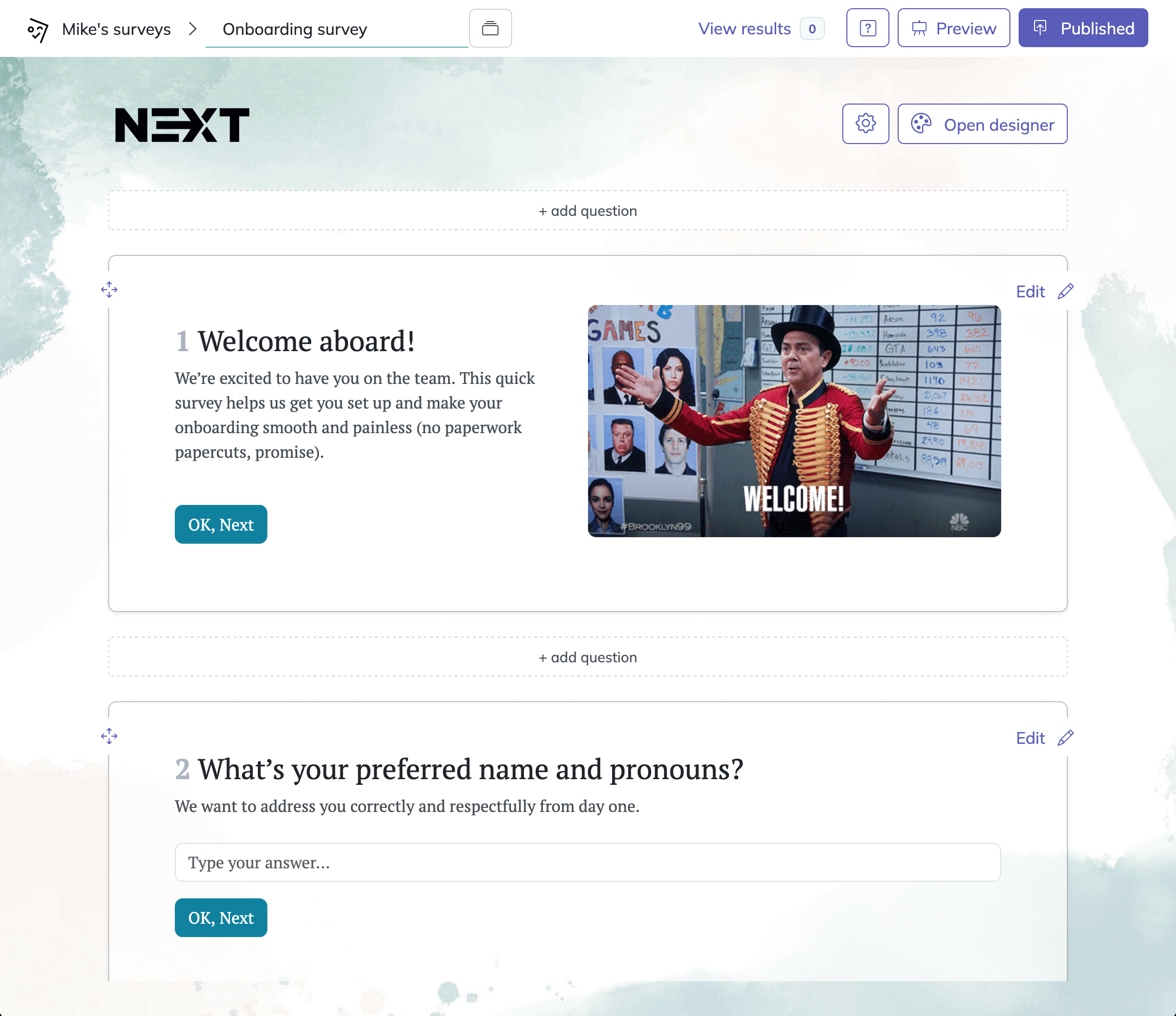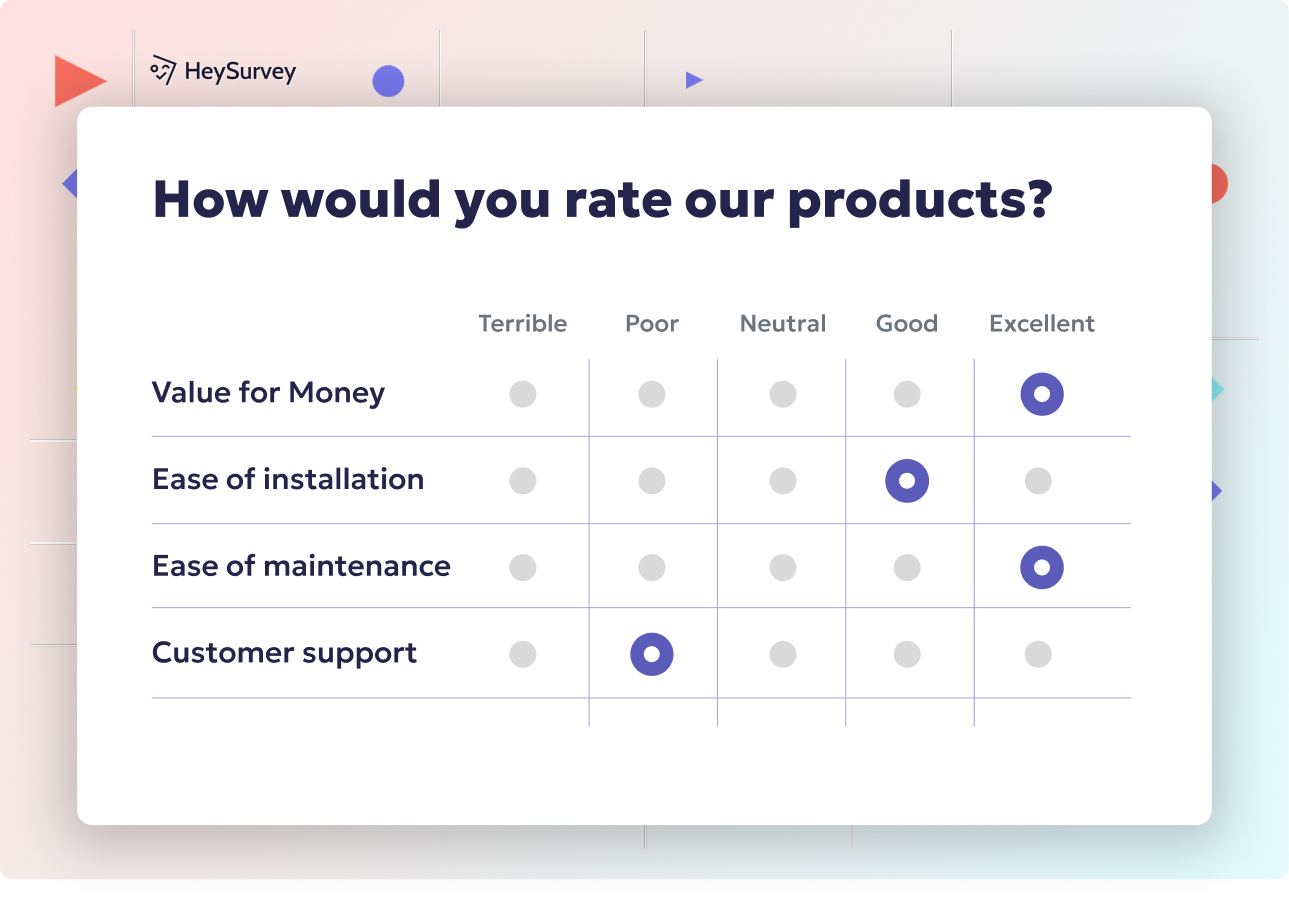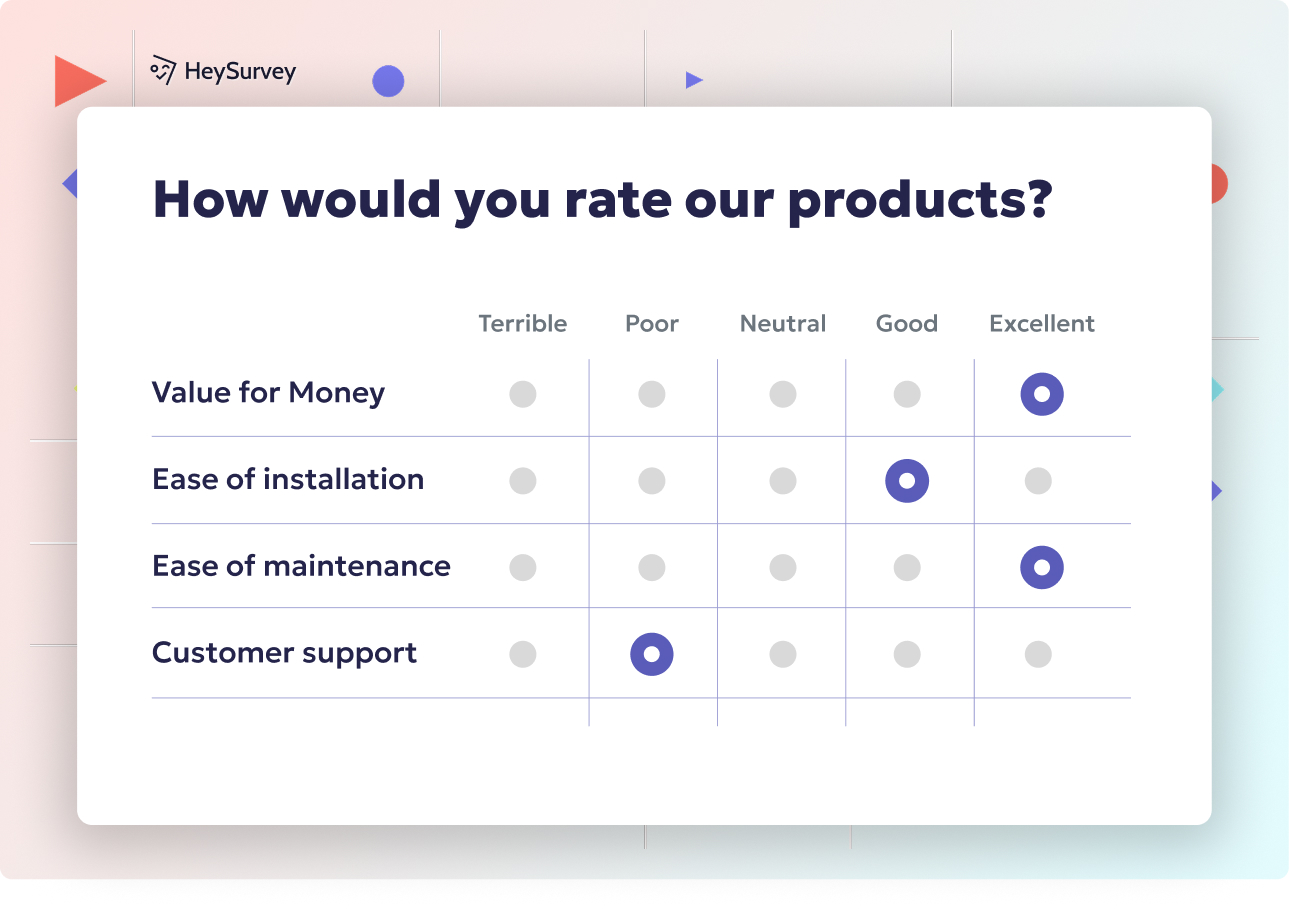30 Professional Development Survey Questions for Employee Growth
Explore 30 professional development survey questions with expert tips to boost employee growth, engagement, and learning effectiveness.
Data-driven learning and development makes the difference between wishful thinking and meaningful employee growth. When organizations tap into targeted professional development surveys, they unlock skill-gap visibility, boost engagement, and strengthen talent pipelines. From onboarding newbies to prepping future leaders, carefully crafted survey questions are the silent superheroes behind transformative workplaces.
Self-Assessment Survey
Why & When to Use
Employees thrive when given the chance to self-reflect and shape their own futures. That’s why self-assessment surveys are especially valuable before goal-setting sessions or annual performance reviews. These tools equip employees to evaluate their current capabilities, flag areas for growth, and crystalize aspirations—all while giving management actionable baseline data for tailored learning opportunities.
Personal awareness is the launchpad for effective development. When employees are prompted to think about strengths, weaknesses, and ambitions, they set the stage for authentic progress. This reflection not only benefits the individual, but also helps organizations craft personalized learning paths.
Use a self-assessment survey:
- Before performance reviews
- Ahead of compensation or promotion cycles
- When kicking off a new project or role
- In onboarding to set expectations
Empower team members with employee self-assessment questions. These get people thinking about where they are, where they want to go, and what’s really getting in the way.
5 Sample Questions
Which three skills do you believe most need improvement this year?
Rate your confidence (1–5) in performing your current role’s core tasks.
What new responsibilities would you like to take on in the next 12 months?
How effectively do you apply feedback from previous reviews?
What barriers are preventing your professional growth?
By gathering these insights, organizations lay the foundation for ongoing L&D feedback. Plus, it deeply involves employees in mapping their own journeys.
A study found that self-assessment explains approximately 51% of the variation in professional development among English language teachers, indicating a significant positive relationship. (onlinelibrary.wiley.com)

How to Create Your Professional Development Survey with HeySurvey in 3 Easy Steps
Creating a professional development survey with HeySurvey is surprisingly simple—even if you’re brand new to surveys. Just follow this quick-start guide, and you’ll have your survey ready to collect valuable employee growth data in no time. Ready? Let’s dive in!
Step 1: Create a New Survey
- Head over to HeySurvey’s dashboard and click “Create Survey.”
- Select “Start from Template” to save time and open a professional development survey template that matches your goals.
- Give your survey a clear internal name so you can find it later (for example, “2024 Employee Growth Questionnaire”).
No account? No problem! You can start building right away, but to publish and collect responses, you’ll need to sign up—it’s easy and free. Once your new survey is created, you’ll be taken directly to the Survey Editor.
Step 2: Add Your Questions
- Click “Add Question” where you want to insert new survey items.
- Choose the question type that best fits your needs: multiple choice, scale (perfect for confidence ratings), text for open responses, and more.
- Enter your professional development survey questions—like those about skills, goals, or feedback we shared earlier.
- Make important questions required to ensure no critical data is missed.
Got complex paths or want personalized experiences? You can apply branching logic to ask different questions based on answers (like skipping leadership questions for non-managers). You can even add images or helpful hints to make your survey more engaging!
Step 3: Publish Your Survey
- Once your questions are set, hit the “Preview” button to see exactly what your respondents will experience—test it on desktop or mobile.
- Navigate to the Publish tab, where you can finalize your survey. If you don’t have an account yet, you’ll be prompted to create one here.
- Publish your survey and grab the shareable link to send via email, embed on your intranet, or post on Slack.
You’re officially live and ready to collect insightful L&D feedback!
Bonus Step 1: Apply Your Branding
Want your survey to feel truly yours? Upload your company logo and customize colors and fonts using the Designer Sidebar. Personalizing the look keeps your employees feeling connected and shows professionalism. It’s as easy as upload, select, and preview.
Bonus Step 2: Define Survey Settings
Before launch, explore settings like:
- Setting start and end dates for survey availability
- Limiting the number of responses if you want tight control
- Adding a thank-you page or redirecting users after submission
These little tweaks create a smooth and polished experience tailored to your organizational needs.
Bonus Step 3: Dive Into Branching
Branching allows you to guide respondents through different paths based on their answers. For example, you might:
- Direct employees with leadership ambitions to leadership-specific questions
- Skip irrelevant sections based on job role
- End the survey early if someone opts out of a particular topic
This keeps your survey concise and highly relevant to each participant.
Ready to get started? Hit the button below to open a professional development survey template and see how easy it is to customize for your team’s growth!
360-Degree Feedback Survey
Why & When to Use
Imagine seeing yourself through every lens at work. That’s the magic of 360-degree professional development feedback surveys—a tool that gathers insights from peers, direct reports, and managers alike. This birds-eye view is essential for leadership programs, promotions, and even auditing organizational culture.
Skip the guesswork and uncover meaningful blind spots. Multi-source feedback shines a light on behavior patterns and strengths, but it also flags where someone might be missing the mark. It’s not just for those climbing the ladder; 360-degree surveys can illuminate team dynamics and support continuous improvement.
Consider deploying a 360-degree survey:
- For leadership and management training
- During talent reviews and promotion discussions
- To support companywide culture analyses
- At regular intervals for holistic employee development
5 Sample Questions
How consistently does the employee demonstrate effective communication?
Describe a recent situation where they excelled at collaboration.
On a scale of 1–5, rate their openness to receiving constructive criticism.
How well does this individual mentor others?
What one change would most enhance their leadership impact?
These questions help organizations fine-tune their talent pipelines and give employees a clear sense of what’s working—and what could work even better.
360-degree feedback enhances self-awareness by providing employees with comprehensive insights into their strengths and areas for improvement, fostering personal and professional growth. (custominsight.com)
Training Needs Analysis (TNA) Survey
Why & When to Use
Ever tried to fix a leaky pipe by painting over it? That's what L&D looks like when training programs don’t match actual skills gaps. A robust skill gap survey, or Training Needs Analysis (TNA), ensures your development dollars hit the mark by pinpointing exactly what teams need—before you budget or launch a major initiative.
A learning needs questionnaire isn’t just a nice-to-have; it’s a must-do. This approach aligns surfacing skill gaps with high-impact business goals. It delivers insights on:
- Which technical or soft skills demand urgent attention
- How prepared people actually feel for day-to-day challenges
- Which learning formats will truly resonate
Deploy a TNA survey:
- Ahead of annual L&D budget planning
- Before system upgrades or rolling out new tools
- When team performance stalls
- To keep pace with rapid industry change
5 Sample Questions
Which technical skills are critical for your role but currently underdeveloped?
How often do you encounter tasks you feel unprepared to handle?
Select preferred training formats (e-learning, workshops, micro-learning, etc.).
Rate the urgency (1–5) for mastering emerging industry tools.
Which soft skills would most improve team performance?
Using these questions, companies can create actionable learning roadmaps that close gaps—fast—while boosting employee morale and efficiency.
Career Goals & Growth Path Survey
Why & When to Use
Ask anyone about their dream job—chances are, they’ll light up. Career development survey questions are designed to keep that internal flame burning bright, connecting individual aspirations with organizational possibilities. These questions support both succession planning and talent retention.
A good employee aspiration survey does more than make people feel seen. It offers a glimpse into the ambitions fueling your workforce—helping you shape engagement strategies, retention plans, and advancement tracks tailored to what actually motivates people.
When to use a growth path survey:
- During annual development check-ins
- When launching internal mobility programs
- To support high-potential talent tracks
- After promotions or lateral moves
5 Sample Questions
Where do you envision your career in three years within the company?
Which lateral or vertical moves interest you most?
What certifications or degrees are you pursuing or considering?
How satisfied are you with current advancement opportunities?
What company resources would accelerate your career progression?
These insights guide investment in learning, stretch assignments, and mentorships—all while showing employees that their big dreams have a home right where they are.
Gallagher's 2024 U.S. Career Wellbeing Report found that career development opportunities significantly influence employee engagement and retention. (prnewswire.com)
Mentorship & Coaching Evaluation Survey
Why & When to Use
Mentorship is like rocket fuel for professional growth—but only when it’s working. Enter the mentor feedback survey: a check-in that reveals what’s really clicking (or not) between coaches and coachees. Run these surveys midway through and after a program to optimize future matches and maximize returns.
A coaching program evaluation tells you if you’re launching careers or just spinning your wheels. Real feedback ensures manager time (and company resources) are going to efforts that actually empower employees to grow.
Use mentorship and coaching evaluation surveys:
- In the middle of mentoring or coaching cohorts
- At the end of a structured program
- To refine future mentor-mentee matching
- To support leadership development initiatives
5 Sample Questions
How frequently do you meet with your mentor/coach?
Rate the relevance of guidance received to your goals (1–5).
What was the most valuable insight gained so far?
Which areas need more focus in upcoming sessions?
Would you recommend this mentorship program to colleagues? Why or why not?
Organizations gain priceless insight into what’s transforming careers—and what could use a tune-up. This leads to more impactful programs and, ultimately, happier, more capable employees.
Post-Training Effectiveness Survey
Why & When to Use
Completing a training doesn’t guarantee transformation. That’s why a post-training evaluation—sent a month or two after the event—makes all the difference. These Kirkpatrick Level 3 survey questions focus on knowledge retention and real-world application.
Great L&D isn’t about seat time—it’s about skill transfer. Post-training surveys map the distance between “I learned it” and “I live it,” flagging where support is still needed or which parts of the training hit the bullseye.
Roll out post-training effectiveness surveys:
- 30 to 60 days after an employee completes training
- Following leadership or technical upskilling programs
- Before planning refresher sessions or advanced modules
- To benchmark ROI for L&D investment decisions
5 Sample Questions
How often have you applied the newly learned skills in your daily work?
Rate the overall usefulness of the training content.
Which module had the greatest impact on your performance?
What challenges hindered you from implementing the new skills?
What additional support would improve skill transfer?
With genuine feedback, organizations deliver better, smarter learning—and employees stay invested in continued growth.
Best Practices: Dos & Don’ts for Professional Development Surveys
The best surveys don’t just gather data—they inspire action. By following a few golden rules, you can increase your employee survey response rate and turn feedback into tangible change.
Survey best practices to follow:
- Do align questions with clear, measurable competencies
- Do keep every survey concise—10–15 minutes max
- Do guarantee confidentiality to ensure honest, thoughtful feedback
- Don’t use jargon or HR lingo that may confuse employees
- Don’t ignore the results—communicate next steps to your team
- Do A/B test question wording to improve response rates
Treat feedback as a gift, not a checkbox. The goal is a feedback loop that encourages dialogue, sparks improvement, and builds trust across teams.
Conclusion & Next Steps
Every great professional development survey is a stepping stone toward a stronger, happier workplace. Used together, these surveys provide a holistic L&D strategy that delivers clarity, growth, and genuine opportunity for all. Keep survey cadence regular, analyze results, and never stop improving the experience.
Ready to put these powerful professional development survey questions to work? Download your free template and subscribe for ongoing L&D insights!
Related Employee Survey Surveys

29 Essential Post Mortem Survey Questions for Project Success
Discover 25+ essential post mortem survey questions to improve projects, boost team morale, and d...

31 Change Readiness Survey Questions to Boost Your Success
Discover 25+ sample change readiness survey questions to assess attitudes, barriers, and confiden...

31 Retreat Survey Questions to Collect Actionable Feedback
Discover 26 essential retreat survey questions to gather actionable feedback before, during, and ...

